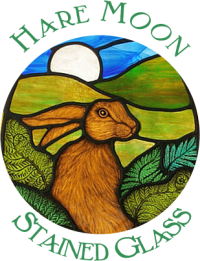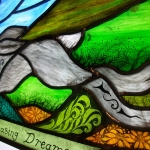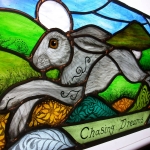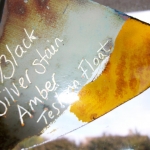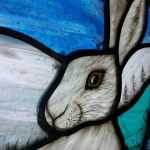The Hare with the Amber Eyes
The Hare with the Amber Eyes: with the aid of Silver Nitrate.
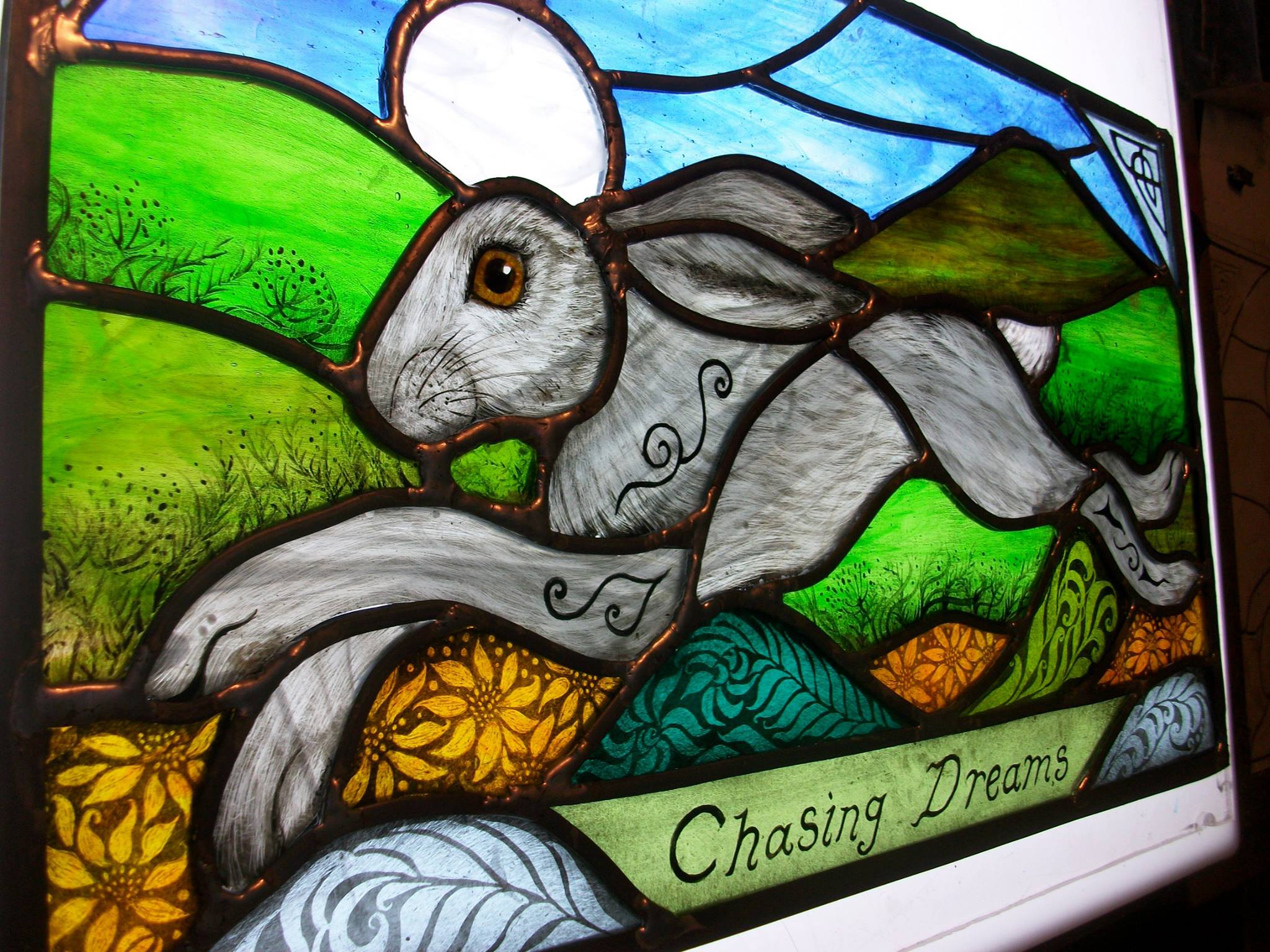
It is a popular misconception that colour is applied to the glass to create stained glass. The colour is in fact in the body of the actual glass. The only colour in traditional stained glass to be added to the glass is silver stain (silver nitrate); this is where the name “Stained Glass” is derived, however in later years this term has been applied much more broadly. Even leaded lights which contain no painted detail are referred to as Stained Glass.

Silver Stain can produce colours ranging from pale yellow to a deep amber; depending on the glass composition, stain composition, the number of applications, the temperature of the kiln, and the colour of the glass to which it has been applied. All of these factors need to be taken into account by the artist to utilize it’s best qualities.
In the 14th century when stained glass artisans had first discovered it’s effects it was a real break though; because it could be used to depict yellow hair, halos and crowns within the same section of glass as the face. This then reduced the amount of light blocking lead lines. it could also be used to give variations of green to blue glass in the rendering of fields, landscapes and so on. Quite how it was discovered nobody knows, but I like the story of the glass worker who lost a silver button on his tunic which fell into the molten glass and produced a yellow streak. A very happy accident indeed!
- Easter Hare Silver Nitrate
- Wonderful Colours
- Silver Hare Chasing Dreams
- silver stain amber test
- Chasing Dreams
- Stained Glass Animals
Silver stain can be a tricky medium to use so a little bit of experimental preparation is always a good idea; before diving in to apply it to a precious piece of glass that you may have previously spent many hours painting and firing. Some types of glass will have a tin side and a non tin side due to it’s manufacture process. The silver stain does not react well to the tin side of the glass. A simple way to find out which side is which is to drop a small amount of water onto one side and see how it reacts. On the non-tin side the water will dissipate more than on the tin side, this is the side you will need to apply it to.

I generally buy my silver stain from the following stained glass suppliers.
www.creativeglassguild.co.uk in Bristol or http://leadandlight.co.uk/ in London. Both provide a prompt delivery service.
Creative Glass Guild is a great place to visit locally if you are in the South West. They have a superb range of glass and other materials, plus lots of interesting books on the subject of stained glass.
